OUTLOOK ON WESTER ROSS the website of Jeremy Fenton

ENVIRONMENTAL CONCERNS
Recently a London-
Wester Ross majors on wild nature, and we need to keep aware of the threats to this. To put it simply, we need to love the land, every bit of it (rock, soil, plant, animal, burn, everything natural), and to think very hard before doing anything which may damage it and the beauty of it. Of course human activities must be allowed; for example, some hydro schemes on lesser burns are a necessary sacrifice (especially since we are privileged not to have wind farms here), road improvements are important, new housing is needed. But some bad mistakes are being made.
Most striking is the rash of tree-
Fences are another curse which has descended on the area, largely built to exclude red deer but also effectively excluding humans, and ugly; most are intended to be removed in due course, but as that costs money it is more usual that they are simply left to rot. Sadly one offender has been the National Trust for Scotland, who have put up fences on Beinn Alligin and Liathach, and in Coire Dubh (between Liathach and Beinn Eighe); and they are even talking of a hydro scheme in Coire Dubh… If this is applied for, let us hope that it goes the same way as Ardessie.
LOVE THE LAND!
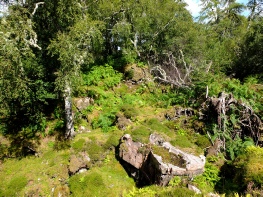
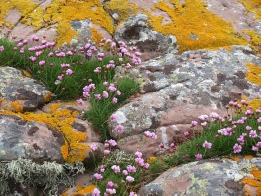
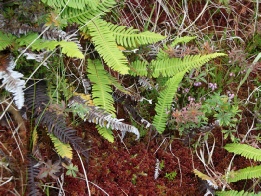
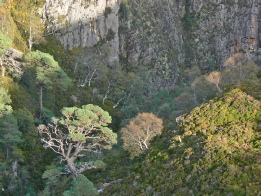
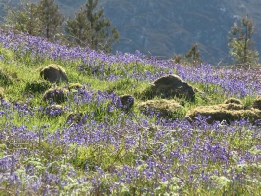
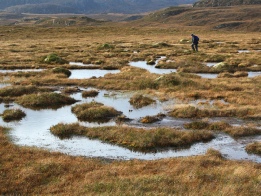
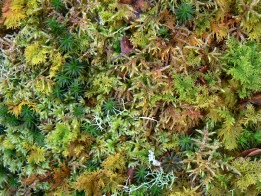
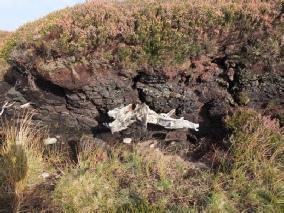
Birch Woodland
Sea coast
Sphagnum Moss & Hard Fern
June bluebells
Mixed mosses
Hill slope pines and heather
Should there be trees here? This tree may be 4000 years old. Later peat growth due largely to climate change means that trees died out and no longer belong here.
Patterned bog
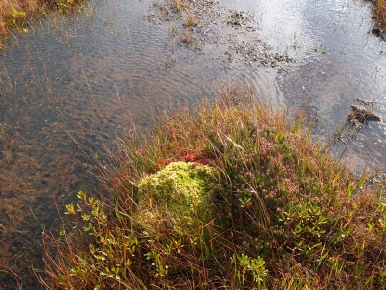
Bogs are Beautiful!
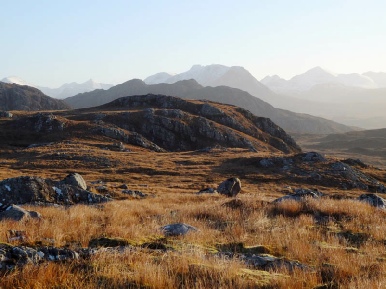
Moorland is Magic!
Knock and Lochan
A useless patch of land, they say.
Build a windfarm, dam a stream, plant a forest.
Let it justify itself. The land replies:
I am what I am. I do not do grandeur.
My mountains are not epic peaks, but haiku hills,
ice-
little ridges, rock-
whole ranges to tackle in an afternoon.
My forests are not tree cities, but rustic villages,
built small for beetles and bugs and gossamer spiders:
jungles of heather and woolly willow, where a man
can stride across the tree tops in seven-
My waters are not great symphonic lakes, but chamber pieces,
composed of liquid freshness, note-
secret lily-
peat-
My moors are not horizon-
water-
wind-
to light a land where small is beautiful.
Master-
as useless as a poem or a painting or a book.
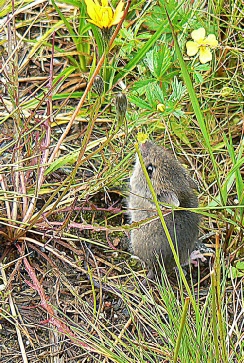
Small Wonder
Steering my two tons down Glen Torridon
I had to stop. The road was blocked
by a mouse.
Even by mouse standards he was small,
a youngster, but unafraid though faced
by a monster.
He looked up, considered, consented to amble
calmly to the roadside where he stopped
to smell the flowers.
Lessons from a mouse: size counts for nothing,
and there is always time to stop
and smell the flowers.
Stag
Rounding a casual rocky knoll on the way to -
stop! shock crackles, shatters the day-
stag and man stand face to startled face,
a world-
frozen we stare, startle melting to curiosity,
each reaching, searching, wondering, but
failing to penetrate the mystery of otherness.
One of us must go. With a flourish of antlers
I turn and run.
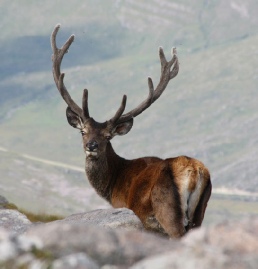
Encounters
As I lean down the path, gravity-
on the roar of the wind, the ground erupts
in a clattering adrenalin burst of wings,
and a shape sails, jet-
Day-
I wake to a splash, where no splash belongs,
and hurry to catch a wet black back slithering
into hiding beneath secretive banks.
High on an evening hill, as I watch the shadows
slowly swallowing detail from the land,
a rock growls at me, unmelts into a shaggy form,
scuttles out of sight behind a crag.
Such is the sorrow of human isolation -
by grouse, otter, goat, all our neighbour animals.
Not quite all: walking home I meet that
miraculously tiny machine of vengeance, the midge.
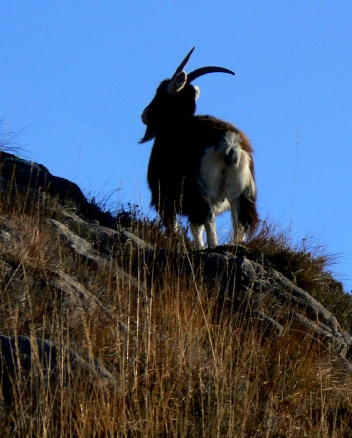
“Knock (Gaelic cnoc) and Lochan” is a common type of landscape here: small hills and lochs. It is best seen in the area east of Gairloch (see Hills: Gairloch Hills).